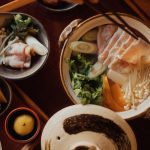Table of Contents
The scent of freshly roasted beans drifts through misty mountain air as the sun rises over Colombia’s emerald hills. This isn’t just about finding your next cup of coffee – it’s about discovering its soul with this ultimate guide to coffee tourism in South America.
The Coffee Belt: Where Magic Grows
Peru’s ancient Incan trails now lead to some of the world’s most prestigious coffee farms. In the shadows of Machu Picchu, small-batch producers craft beans that top baristas fight over. The secret? Altitude. These farms, perched between 4,000-6,000 feet, create perfect growing conditions that mass producers can’t match.
Colombia’s Coffee Triangle isn’t just a place – it’s a time machine. Third-generation farmers still hand-pick every cherry, refusing to let machines touch their precious crops. Their grandparents’ methods, passed down like family recipes, produce flavors you won’t find anywhere else.
Hidden Gems That Mass Tourism Missed
Skip the tourist traps and head to Brazil’s Minas Gerais region. Local families open their homes to visitors, sharing centuries-old roasting techniques over breakfast. Pro tip: Visit during the harvest season (May-September) when the hills burst with ripe coffee cherries and the air fills with the sweet scent of processing beans.
Ecuador’s coffee scene flies under the radar – and that’s exactly why you should go. The Galápagos Islands aren’t just about unique wildlife; they produce some of the rarest coffee beans on Earth. Only a handful of farms exist here, making every cup a collector’s item.
Taste The Terroir: Regional Flavor Profiles
Brazilian Santos beans bring subtle chocolate notes and a light, sweet finish that’s perfect for afternoon sipping. Head north to Colombia’s Nariño region, and you’ll find bright, citrusy profiles with caramel undertones – the result of volcanic soil and precise altitude control.
In Venezuela’s Andean foothills, small producers create beans with distinctive nutty profiles and hints of brown sugar. These farms are harder to reach, but the unique flavors make every bumpy road worth it.
Your Perfect Coffee Adventure
Timing is everything. The harvest seasons roll through South America like a wave:
- Colombia: Main harvest September-December, smaller harvest April-May
- Brazil: May-September
- Peru: April-September
- Ecuador: June-October
Stay at a working farm in Colombia’s Quindío region. Wake up to roosters, learn to pick the perfect cherry, and roast your batch. These aren’t tourist experiences – they’re real life on a coffee farm, complete with family dinners and late-night stories about the region’s coffee history.
The Art of Processing
Watch as farmers demonstrate different processing methods that dramatically affect your cup’s final taste. Natural processing, where cherries dry in the sun like raisins, creates bold, fruity flavors. The washed process, involving fermentation tanks and careful monitoring, produces cleaner, brighter profiles.
Some innovative farms now experiment with honey processing, leaving varying amounts of fruit pulp on the bean during drying. This creates unique flavor profiles ranging from subtle sweetness to intense fruit notes.
Beyond the Bean
Coffee tourism isn’t just about coffee. In Peru’s Chanchamayo Valley, ancient coffee processing methods mix with modern sustainability practices. Farmers here don’t just grow coffee; they protect rare bird species and maintain vital rainforest corridors.
Visit Bolivia’s Yungas region where coffee farms dot roadways once used by pre-Columbian traders. Here, coffee grows alongside coca leaves, creating a unique agricultural landscape that tells the story of South America’s complex relationship with stimulant crops.
Cultural Immersion Through Coffee
Each region’s coffee culture reflects its broader heritage. In Colombia’s indigenous communities, traditional brewing methods involve clay pots and wooden stirrers that impart subtle earthiness to each cup. Local myths speak of coffee trees as gifts from mountain spirits, adding layers of cultural significance to your tasting experience.
Sustainability in Action
Modern coffee farms balance tradition with innovation. Solar-powered processing facilities in Brazil’s São Paulo state show how technology can enhance rather than replace traditional methods. Water recycling systems protect local watersheds while maintaining bean quality.
Insider Tips That Make A Difference
Book directly with farms instead of through agencies. Many family-run operations offer stays but don’t advertise on major platforms. Contact them through local coffee cooperatives for the most authentic experience.
Learn basic Spanish coffee terms. Knowing the difference between “lavado” (washed) and “natural” (unwashed) processing methods shows respect for the craft and opens doors to deeper conversations with producers.
Pack light but smart. Bring quick-dry clothes and good hiking boots – you’ll need them for morning farm tours. Most importantly, bring a reusable cup. You’ll want to taste everything.
The New Wave
Young entrepreneurs are revolutionizing their family farms. In Colombia’s Huila region, farmers experiment with honey processing and natural fermentation, creating flavors that challenge everything you thought you knew about coffee.
Climate change pushes farms higher up mountains each year, creating new challenges and unexpected opportunities. Some producers now grow coffee at altitudes once considered impossible, resulting in unique flavor profiles that didn’t exist a decade ago.
Coffee Communities
The best part of coffee tourism? The people. Multi-generational farming families share meals, stories, and their passion for coffee with visitors. You’ll learn about micro-lots, processing methods, and cupping techniques, but the real value lies in the connections you make.
Small communities organize local coffee festivals where you can experience traditional dance, music, and food alongside your caffeine education. These events showcase the integral role coffee plays in local culture and economy.
Getting There and Around
Transportation between farms requires planning. Local guides often know secret routes and hidden gems that GPS can’t find. In Colombia’s coffee region, Jeep Willys serve as iconic transport between farms, offering stunning views and authentic local experience. Book accommodations through farm cooperatives – they often offer better rates and more authentic experiences than mainstream hotels.
What to Pack Beyond Basics
Bring a coffee journal to record tasting notes and farming techniques. A good camera with manual settings captures the misty morning light that coffee regions are famous for. Pack ziplock bags – you’ll want to bring home sample beans from each farm you visit.
Why Right Now Matters
Small farms face pressure from large corporations and climate change. Your visit directly supports families fighting to maintain traditional methods while adapting to modern challenges. This isn’t just tourism – it’s the preservation of an art form. The mountains are calling, and they brew a perfect cup.

I’m Garrett, a seasoned photojournalist with a passion for uncovering the world’s hidden treasures. My journey is fueled by a deep curiosity for diverse cultures and breathtaking landscapes. When I’m not behind the lens capturing the world’s wonders, you can find me exploring underwater realms or sharing my passion for discovery with my two adventurous children.




